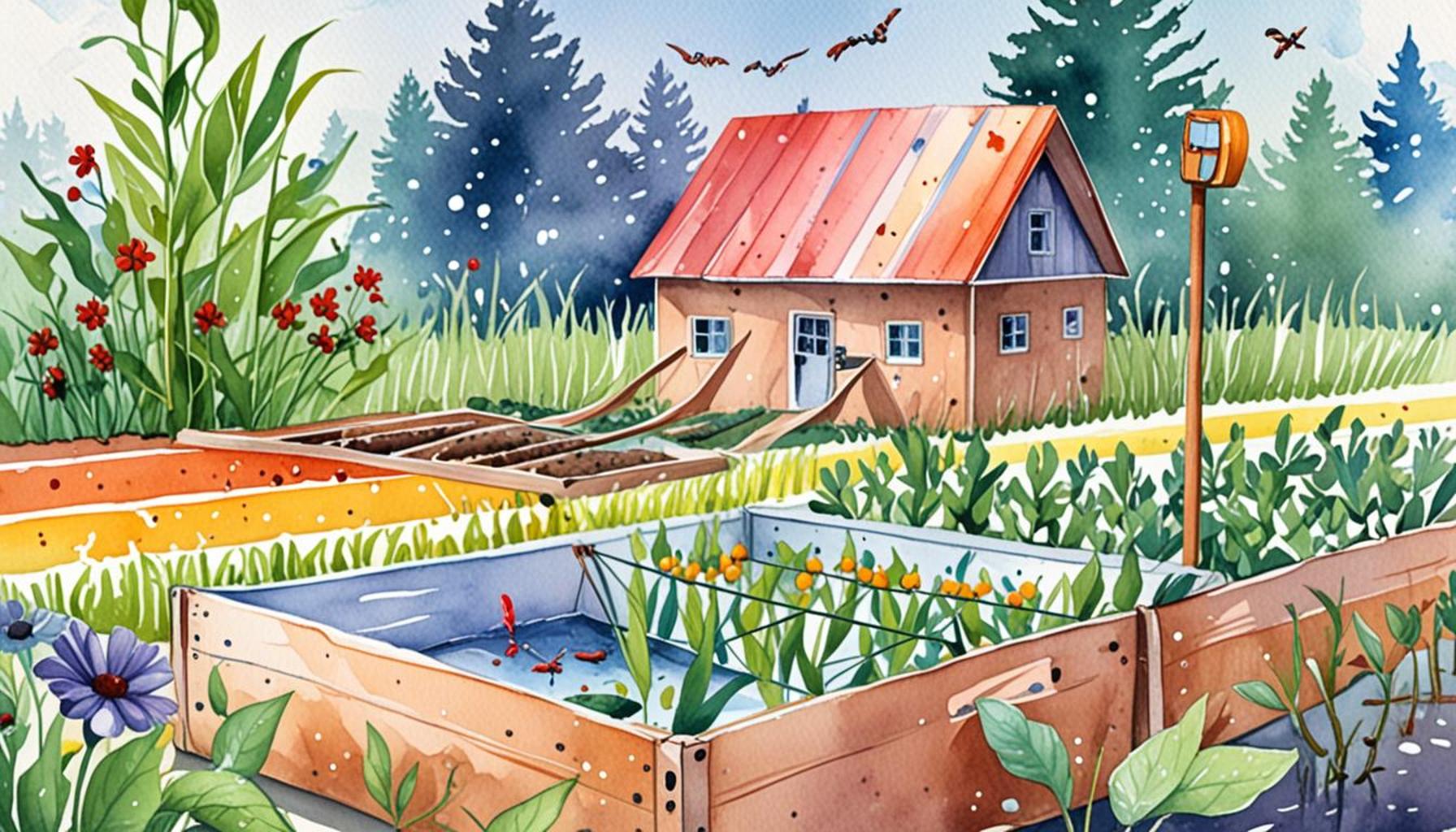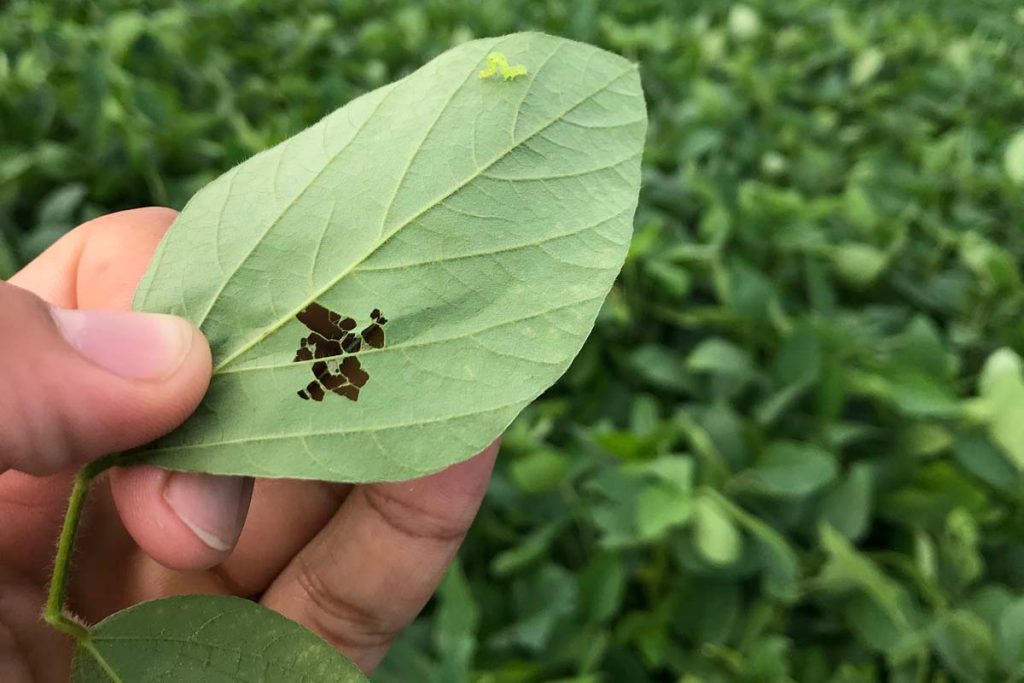How to Use Homemade Traps to Monitor and Control Pests in Crops

The Growing Importance of Sustainable Pest Management
In today’s agricultural landscape, pest management remains a significant hurdle for both farmers and gardeners. As pests evolve and develop resistance to conventional chemical pesticides, the need for alternative methods grows increasingly urgent. Many individuals are now embracing eco-friendly solutions that not only protect their crops but also contribute to a healthier environment. Among these innovative strategies, the use of homemade traps stands out as a particularly compelling option.
Benefits of Homemade Traps
Creating your own pest traps offers numerous advantages. First and foremost is the aspect of cost-efficiency. By repurposing common household items—such as plastic bottles, jars, or even containers—you can drastically cut down the costs typically associated with commercial pest solutions. For example, a simple fruit trap can be crafted using a mason jar filled with vinegar and a piece of fruit, costing only a fraction of store-bought traps.
Another critical benefit is the environmental safety that homemade traps provide. Traditional pesticides can have detrimental effects on not just the targeted pests but also beneficial insects like bees and ladybugs, which play essential roles in pollination and natural pest control. Homemade traps allow you to minimize your reliance on harsh chemicals, thereby fostering a more sustainable ecosystem in your garden or farm.
Customizable Solutions for Different Pests
The versatility of homemade traps cannot be overstated. Customization is a key advantage, enabling gardeners and farmers to devise traps that specifically target the pests causing them difficulties. For instance:

- Fruit flies can be effectively captured using traps made from apple cider vinegar and dish soap, which lure them in while preventing their escape.
- Snails are notorious for devastating crops, but beer traps—where a shallow dish of beer is sunk into the ground—create an irresistible lure, ultimately leading them to their demise.
- Ants can be managed through simple traps made with a mixture of sugar and water, which attracts them while allowing easy removal of the captured pests.
Monitoring and Action
Beyond just eliminating pests, homemade traps serve as valuable monitoring tools. By regularly checking the traps, you can assess the extent of pest infestations in real time. This insight can empower you to take timely and informed action, whether it means increasing the number of traps, employing companion planting, or implementing other pest control methods. The ability to monitor effectively can be pivotal in safeguarding not just the current crop but also future harvests.
Conclusion: Enhancing Your Pest Management Strategy
As agricultural practices continue to evolve, integrating homemade traps into your pest management strategy can yield significant benefits for crop health and overall yield. The customization, economic savings, and eco-friendliness associated with these traps make them an enticing option for those looking to combat pest issues sustainably. By exploring the various types of traps and their construction, you can take proactive steps toward creating a thriving, pest-resistant environment in your garden or farm.
DISCOVER: Click here to simplify your plant care
Understanding the Mechanics of Homemade Traps
To effectively use homemade traps for monitoring and controlling pests in crops, it’s crucial to understand how these traps function. The key lies in their ability to attract pests through the use of lures that appeal to their natural instincts. By leveraging simple items and common household ingredients, farmers and gardeners can create traps that are not only effective but also tailored to their specific pest challenges.
Basic Principles of Trap Design
The design of your homemade trap should focus on a few fundamental principles:
- Attraction: Traps should utilize bait that draws pests towards them. This can be food-based for herbivorous insects or pheromones and smells for more specific species.
- Entrapment: Once attracted, the pests must be unable to escape. This could be achieved through physical barriers, sticky substances, or liquid solutions.
- Monitoring: Keep checking the traps at regular intervals to assess the level of infestation and the effectiveness of your strategy.
Understanding these principles will enable you to construct traps that not only catch pests but also provide essential data about pest populations over time. For instance, a homemade fly trap designed using a plastic bottle can be modified to enhance its lure features by adding sugar-water mixtures alongside vinegar. The combination attracts a wider array of flies and increases the likelihood of capture.
Materials Needed for Effective Traps
The materials you choose for making these traps can significantly impact their effectiveness. Many traps use readily available items that you might already have at home. Here are some commonly utilized materials:
- Plastic bottles: Easily converted into multiple trap designs.
- Glass jars: Great for attracting and capturing soft-bodied insects.
- Kitchen scraps: Leftover fruits and vegetables can be excellent bait, particularly for fruit flies.
- Soaps and oils: Adding a few drops of dish soap to water in traps reduces surface tension, preventing pests from escaping.
By utilizing these materials creatively, you can construct effective traps without breaking the bank. For example, turning an empty soda bottle into a trap for garden pests can simply involve cutting the top off, inverting it, and adding some bait. This simple modification allows for easy entry while preventing exit. Such ingenuity is what makes homemade traps not only practical but also engaging for those interested in sustainable farming practices.
Leveraging Technology for Enhanced Effectiveness
In today’s digital age, technology can also assist in improving the effectiveness of homemade traps. Utilizing mobile applications that provide pest identification can help ensure that your traps are designed to target the specific species causing problems in your crops. Additionally, social media groups and forums offer platforms to exchange ideas about effective trap designs and pest management strategies. This collaborative approach amplifies the potential of your homemade traps, allowing for shared experiences and innovative adaptations.
| Category | Key Benefits |
|---|---|
| Cost-Effectiveness | Homemade traps are usually made from readily available materials, reducing the overall cost of pest control. |
| Environmental Impact | Using homemade traps minimizes chemical usage, promoting a safer ecosystem and healthy crops. |
| Customization | Farmers can tailor traps to target specific pests, enhancing effectiveness in monitoring and controlling pest populations. |
| Simplicity of Use | Homemade traps are easy to build and deploy, allowing even novice farmers to manage pests effectively. |
Applying homemade traps in your agricultural practices not only supports effective pest management but also encourages sustainable farming approaches. These traps, often crafted from simple materials around the farm, can significantly aid in monitoring pest activity. By strategically placing traps in crop fields, farmers gain crucial insights into pest populations and behaviors, allowing them to take timely action. Furthermore, the customization of these traps ensures they target the most problematic pests, enhancing crop yield while maintaining biodiversity.
Incorporating such methods aligns with organic farming principles, offering an eco-friendly alternative to chemical pesticides. Educating yourself on different trap designs, such as sticky traps or beer traps for slugs, can unlock new avenues for pest control on your farm. Moreover, tracking the effectiveness of these traps can lead to more informed decisions on crop rotation and pest management strategies. With agriculture evolving, embracing these age-old methods provides a balance of tradition and innovation in crop protection.
DIVE DEEPER: Click here to discover more about organic matter in soil health
Types of Homemade Traps for Specific Pests
Creating homemade traps is not a one-size-fits-all approach. Different pests require different designs and lures. Understanding your target pest is essential to developing effective traps that can significantly contribute to crop protection. Here are a few examples of common pests and how to tailor your traps to manage them effectively.
For Fruit Flies
Fruit flies can devastate your home garden or farm’s produce. To attract these persistent pests, a simple yet effective homemade trap can be constructed using a mixture of apple cider vinegar and a drop of dish soap. The vinegar serves as a potent lure, while the soap reduces the surface tension of the liquid, ensuring that the flies sink and cannot escape. Pour the mixture into a jar or bowl and cover it with plastic wrap, securing it with a rubber band. Puncture small holes in the wrap, allowing the flies to enter but not exit.
For Aphids
Aphids are another challenging pest that can be managed effectively with a homemade trap. An effective method involves using yellow sticky cards. These cards attract aphids because they are drawn to the color yellow. You can make these cards using cardboard painted bright yellow and coated with a layer of a sticky adhesive, such as petroleum jelly or vegetable oil. Place these cards strategically around your crops, and replace them regularly to maintain effectiveness.
For Beetles
Flea beetles and other similar pests can be attracted to light. A simple light trap can be implemented by taking a bucket or container and placing a lantern or a small light source above it at night. Fill the bottom of the container with a soapy solution that will drown the beetles that are drawn in by the light. This method not only captures the beetles but also contributes to monitoring their activity levels over time, helping you to synchronize control measures when they are most effective.
Monitoring Our Catches
Regular monitoring is key to the success of any pest management plan. Homemade traps not only assist in capturing pests but also provide valuable insights into the pest population dynamics. Tracking the number and species of pests you catch allows for informed decisions regarding treatment strategies. For instance, if your traps indicate a sudden spike in aphid populations, you might choose to intervene with insecticidal soap or introduce natural predators like ladybugs before they wreak havoc on your crops.
Legislative and Environmental Considerations
When implementing homemade traps, it’s essential to remain compliant with local agricultural regulations regarding pest management. Moreover, the use of organic and non-toxic bait options and trap designs aligns with sustainable farming practices, minimizing harm to beneficial insects and the broader ecosystem. This environmentally conscious approach not only promotes healthier crops but also strengthens the soil health and biodiversity in your growing area.
Incorporating these strategies in your homemade pest control efforts enhances not just productivity but also responsibility as a steward of the land. The world of homemade traps is a fascinating intersection of ingenuity and practicality, notable for its ability to empower farmers and gardeners alike in protecting their crops sustainably.
DISCOVER MORE: Click here to learn about soil moisture techniques
Conclusion
In the pursuit of innovative and sustainable pest management, homemade traps have emerged as an invaluable tool for farmers and gardeners alike. By understanding the specific needs of different pests and continually refining our approaches to pest control, these DIY solutions can lead to effective monitoring and management strategies that ultimately safeguard our crops. From utilizing apple cider vinegar to targeting fruit flies to deploying yellow sticky cards for aphids, the versatility and simplicity of homemade traps cannot be overstated.
Moreover, regular monitoring of captured pests offers critical insights into their behavior and population dynamics, enabling proactive action before infestations escalate. Keeping track of these changes translates into better-informed decisions about intervention methods, whether through organic treatments or the introduction of beneficial predators.
As interest in environmentally friendly farming continues to rise, leveraging homemade traps aligns perfectly with modern agricultural practices. Such methods not only minimize impacts on beneficial species but also contribute to better soil health and biodiversity, reinforcing our role as responsible stewards of the land.
In conclusion, the journey towards effective pest control is an ongoing process. Each homemade trap serves as a testament to our creativity and adaptability, revealing new strategies for crop protection. By continuing to research and experiment, we can enhance our understanding of pest management and innovate even further. With these efforts combined, the agricultural community can foster healthier ecosystems and reap the rewards of more resilient crops.


